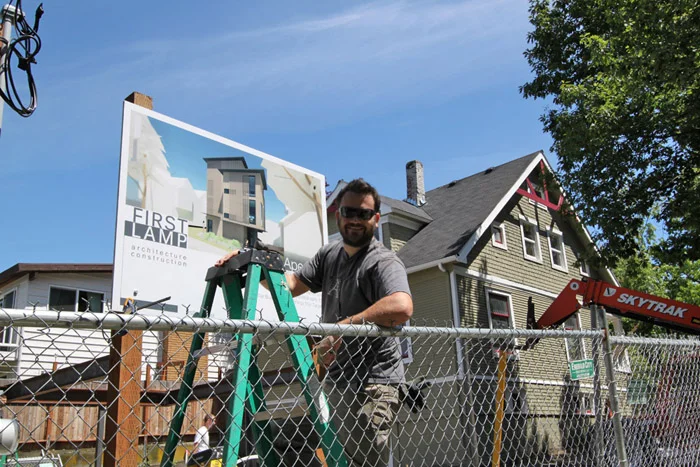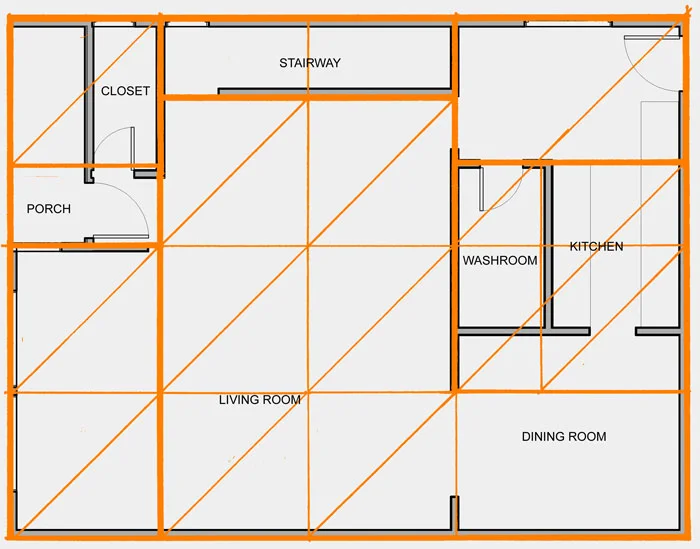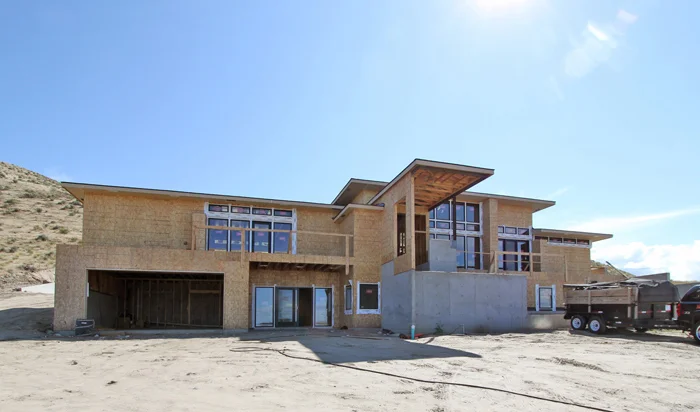We wanted to share some of the sustainable materials we've been using on our current project - Ballard Aperture.
Read MoreThe latest images of the completed siding on Ballard Aperture.
Read MoreWe're getting excited to see the completion of the Badger Mountain Residence. Here are a few preview shots of the house getting close to completion.
Read MoreIn order to maximize the quality of air inside the home we have applied a 4 part scheme. 1st is Air Sealing (See previous post "Air Sealing - What's the Big Deal"). The 2nd is the implementation of ERV's (Energy Recovery Ventilation) units. These units control the natural ventilation by preconditioning the incoming outside air. During times of warmer weather they dehumidified and cool the air and in cooler conditions warms up the outside air before distributing the naturally ventilated outside air inside the units. These systems are one of the most effective ways to reduce the use of energy while keeping the relative humidity at optimal levels.
The 3rd part of the scheme is the use of Ductless (Mini-Split) Heat pumps for heating AND COOLING. They have many advantages over traditional forced air systems. First and foremost, they are up to 3 times more efficient than the most efficient furnaces on the market, and do not lose any of their energy through "duct-losses". Also with no ducts you won't have the build up of dust and dander in a duct system subsequently being pushed though out the house dramatically reducing the spread of allergens etc... They also come with head units that are individually controlled with thermostats and remotes that allow for zoning.
The 4th part of the scheme is the use of low VOC paints, stains and materials. More on that in later posts...
See images of the ERVs and Ductless Heat Pumps installed in Ballard Aperture.
Read MoreHere are a couple of sneak peek shots of the kitchens and stairs at Ballard Aperture.
Read MoreOn Ballard Aperture we chose to go with BIBS Insulation (Blown In Blanket). The process starts with the insulators applying netting over the studs creating an enclosed box within each stud bay. The next step is applying a hose in the netting and filling the stud bay with insulation. The advantage of this process over traditional insulations is 1. The small particles of insulation fill all possible space within the wall 2. The insulation will not settle over time 3. We get a higher-than-code insulation value of R-23. Additionally, the insulation we chose is formaldehyde free. In locations where blown-in was not feasible, such as the trussed roof and for the sound insulation between units, we used EcoBatt.
Read MoreBelow are a few close up shots of the wood installed on Ballard Aperture. We're extremely happy with the results!
Read MoreLever Homes was feature in Houzz!
Read MoreWe wanted to share the process and product for treating the wood siding on Ballard Aperture. Most stain products last from 1-5 years depending on the transparency level and penetrating quality of the stain (usually less in the northwest). For this project we used LifeTime Wood Treatment (click on the name for more info). The best part besides being low-toxic is it will never require any maintenance for the life of the wood. That means no fading or re-staining... EVER!
Read MoreFraming is complete on Ballard Aperture... Check out a few photos on this beautiful day!
Read MoreThe Lever Homes was recently selected as the project of the month for August in the Seattle Daily Journal of Commerce. Click here for a link to the article.
Thanks again to all those who helped make that project possible!
Read MoreOn the Ballard Aperture project we have doubled our efforts to reduce unwanted air infiltration into the building. This is an issue that has flown beneath the mainstream radar for years, despite the fact that energy gurus have been talking about it for years. Now that the Washington State Energy Code requires blower door tests for every residence, envelope performance is now on the minds of more builders and is conveniently quantifiable. The results of the test produce a simple number -- how many times the volume of air inside the entire building is completely replaced within one hour at a given pressure. I could write pages about this but I don't need to -- you can read more about the test here and here and watch a video of a test here.
Simply put, buidlings breathe (even with all of the windows and doors closed) more than most people realize. There are two problems with this: Energy Loss and Lowered Indoor Air Quality
Energy Loss: Outdoor Air temperature in this area is usually cooler than what's comfortable inside, so your heating system is having to work harder to heat all of this air leaking to the inside. Blower door tests performed on a typical home in Americana tell us that if you add all of opening areas of the cracks and crevises together, it would be like leaving a window or two wide open in your home - something you would never do in January.
Indoor Air Quality: If we had a choice, we'd rather not breathe air filtered through our garage, attic, or walls every second we are inside our home. In larger buildings, severe cases of low indoor air quality are labeled Sick Building Syndrome.
How to Fix it: 1: Build a tight envelope and 2: install an HRV or ERV (a sophisticated filtration system which we have installed in this project and will blog about soon). The next post will show the measures we are taking to try and build the tightest envelope we can.
Read MoreA few shots from our Ballard Aperture project getting started!
Read MoreThis is the main floor plan of the house we featured in our May 25th blog post. We used the field measurements to create CAD drawings, printed them, and overlaid them with trace to find a geometric pattern. These patterns appear very often, especially in older homes with entire floor plans based strictly off of material dimensions. This plan uses an 8' grid with slight variations for tight or exceptional spaces. These variations conform to the golden mean, a ratio that occurs organically in many natural forms. We'll end this now because I could bore everyone to tears by writing endlessly about the golden mean.
Read MoreHere are a few update photos of the Badger Mountain House in Richland, Washington. The steel and concrete work is going well and we are looking forward to seeing some of the finishes start to go up soon. The view from the house of Badger Mountain and the Columbia River are pretty impressive.
Read MoreThis weekend joined up with a group of clients and consultants and took a tour of Islandwood on Bainbridge Island. We picked this destination because of its programmatic similarity to one of our upcoming projects -- they both have a strong focus on education, sustainability, and the dovetailling of the two.
Read More
















